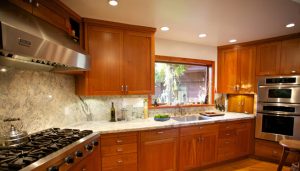
Not sure if you need LED lights for your home?
With the numerous benefits of switching from traditional lighting to LED lights, it’s easy to see why these energy efficient bulbs are becoming increasingly popular in homes. LED lights can save an average home with 24 light bulbs tens of thousands of dollars in energy costs over the 17-year lifespan of the bulbs. Plus, homeowners can feel good knowing that the choices they are making on home lighting are the best for the environment.
Still, replacing all the bulbs in a house can seem like an overwhelming task. Fortunately, homeowners can easily start with the lights that are used most frequently and slowly work their way through the rest of the house.
What to do with the old bulbs
While it’s tempting to wait until bulbs burnout to replace them, replacing functioning lights with LED bulbs is still a better choice when you consider the money that will be saved in energy costs. If you are concerned with “wasting” the resources that have already been spent producing old light bulbs, rest assured that the energy you save by replacing them will far outweigh the environmental cost of throwing them away – assuming you dispose of them correctly. After you’ve changed the bulbs in your house from incandescent or fluorescent to LEDs, you’ll need to dispose of those leftover light bulbs. The best thing to do is to simply recycle them or throw them away. Be aware that CFLs (compact fluorescent tubes, the ones that look like corkscrews) contain mercury and should never be thrown in the garbage. While CFLs are more efficient than incandescent or fluorescent, the presence of mercury is enough of a reason to replace.
Choosing the right LED lights for your home
When you start shopping for LED lights, you’ll notice that lighting temperatures are measured in Kelvins on the LED light boxes. If you prefer a cooler, blue light, look for bulbs that are 3,000 K or higher. These bulbs are often said to mimic “sky” lighting. If you prefer a more yellow, warm light, similar to the early morning or late afternoon, choose a bulb that is 2700 K or less.
You’ll also notice that there are options regarding the amount of light output. A good rule of thumb is the following: 100W bulbs for overhead lighting, 60W bulbs for lamps and 25W bulbs for soft, gentle lighting. Because LED bulbs only use a tenth of the wattage that traditional bulbs use, the measurements are a little different. Fortunately, most boxes say something like, equivalent to a 60W bulb. However, if they don’t, it is easy to remember that LEDs use 10% of the energy that regular bulbs do. So if you are looking to replace a 100W bulb, a 10W LED will be the equivalent.
Dimmable lights are also available as LEDs. They cost a little more than LED lights that don’t dim, but again, the energy savings will outweigh the initial cost, and they function just as well as traditional lights.
LED lights for your home are also available in specialty bulb forms if you have a lamp or special fixture that requires a unique bulb. If you are still having trouble finding the right bulb for your fitting, there may be a converter kit available that would be easier to install that replacing the whole unit.
